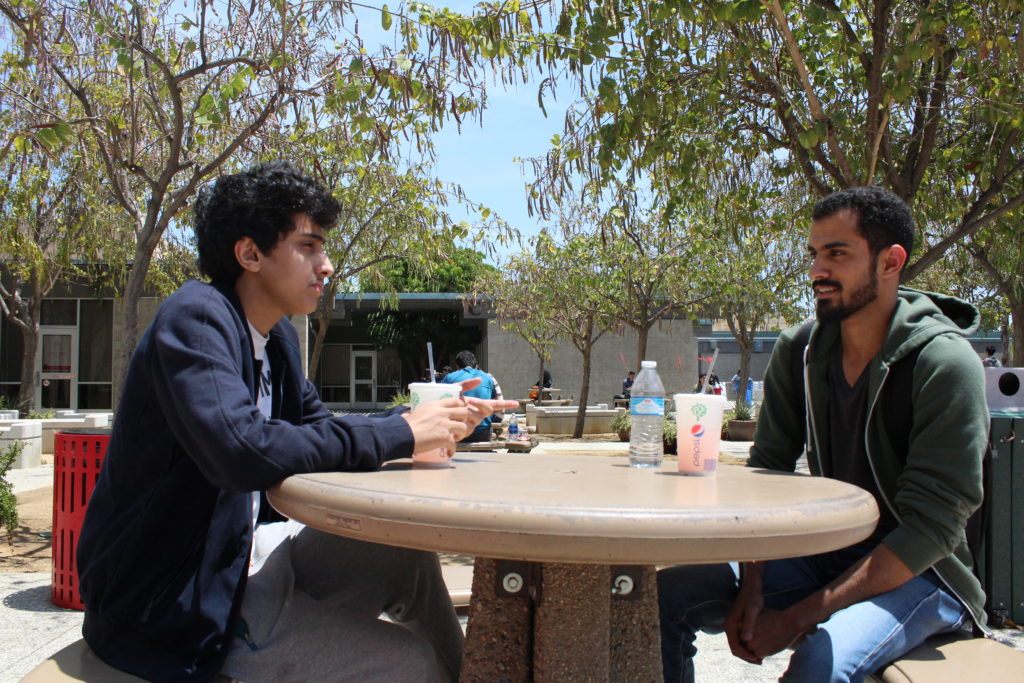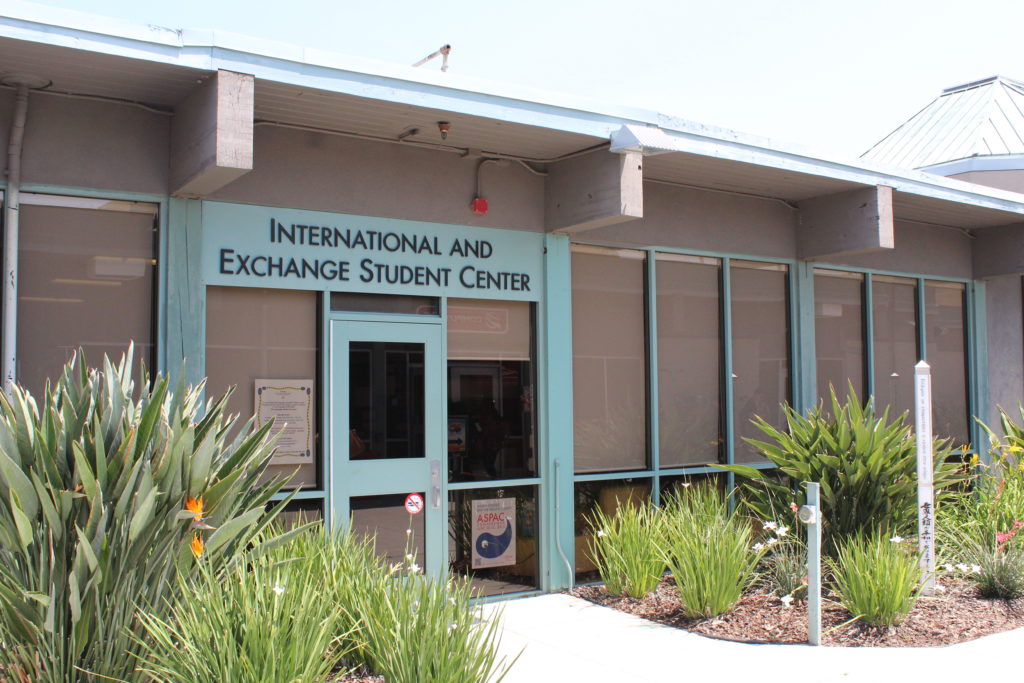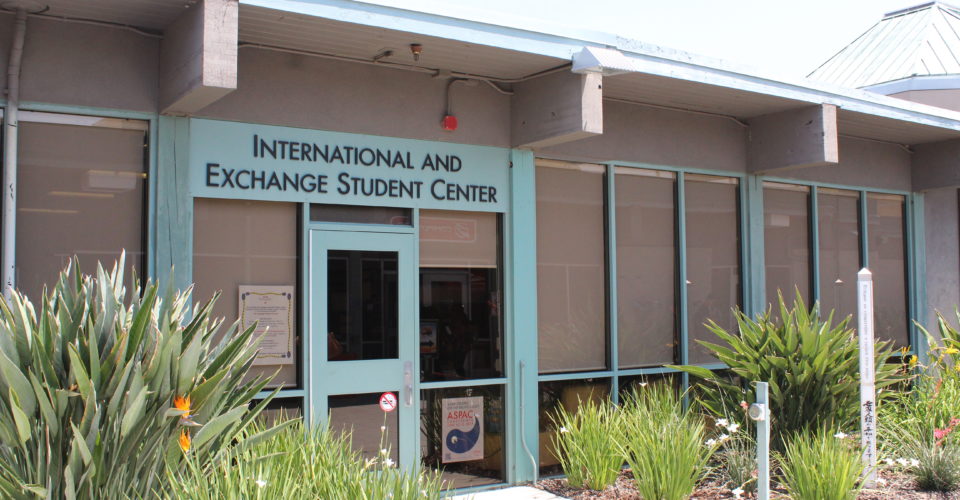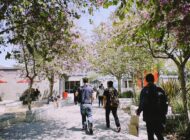Despite a rapidly growing international student population, they still face issues paying for school and finding jobs.
By JULIUS LASIN
EL NUEVO SOL
Ken Ugalino, a 23-year-old accounting major at CSUN, has a furrowed brow as he slowly spins a globe in the International and Exchange Student Center on campus.
“In my culture there aren’t that many people expressing themselves,” he said. “But here, you need to express yourself and your opinion to survive.”
Ugalino, who is an international student from Japan, often brings up the idea of surviving in the United States.
He is one of 1.2 million international students—a number reported in the U.S. International and Customs Enforcement’s December 2015 “SEVIS By the Numbers” Report—who face obstacles that their U.S.-born counterparts do not.
As an international student, one of the biggest hurdles Ugalino faces is the financial aspect, and paying for school.
“Definitely, the tuition is ridiculously expensive here,” Ugalino said. “I worry about it all the time.”
International students like Ugalino have concerns about tuition more so than local students because they pay an additional 327 dollars per unit at CSUN, or nearly double because of how much the state pays for local students’ tuition.
“The state doesn’t give us money for non-residents and internationals,” said Sandra Jardin, the Interim Assistant Director of International Admissions. “They give us money for residents, which is why we need to shrink and get impacted.”
Moreover, international students don’t have the luxury, or option, to get financial aid from the state or country.
“They can’t get financial aid. Federal aid is for only for residents, and international students are never residents,” said Jardin. “They have to have that money themselves, or their family or a sponsoring agency.”
Despite the fact that Ugalino and other international students find themselves cobbling together money to pay for tuition, schools see a financial opportunity to benefit from international students.
According to Open Doors Data, international students brought in revenue of $30.5 billion to the U.S. economy in 2015.
“Of course that’s part of it, no question,” said Jardin, when asked if schools took into account the financial benefit of admitting international students. “But of course it’s a trend for state schools to survive because we’re getting less money from the state, and that’s one way to find additional revenue.”

Faisal Aghammas (left), a 20-year-old business major at CSUN and Mashal AlShammari, a 25 year-old medical laboratory sciences major take a break before classes outside of CSUN’s International and Exchange Students Center. Photo: Julius Lasin / El Nuevo Sol.
Although international students contribute a massive amount of revenue, the opportunities for them to make any type of money in the U.S. while they are still in college are few and far between.
Often times they are limited to jobs on campus, as most of their visas specify that outside employment has to be in their field of study.
“I tried to get a job on campus, but it’s really hard to get one,” said Ugalino. “Not only are international students looking for a job, but regular American students are too.”
However, when it comes to work in their field of study, international students do have help and options. More specifically, in the form of Optional Practice Training, or OPT.
In short, OPT allows students to extend their student visas after they have graduated, given that they find work in their fields of studies. The lengths of these extensions vary depending on a student’s field of study.
According to Jardin students pursuing careers in technical fields such as those in science, technology, engineering and math (STEM), tend to have longer periods of OPT, reaching up to 36 months.
In spite of the fact that 39.1 percent of international students are in STEM program—according to “SEVIS By the Numbers”— Jardin believes that international students aren’t dictated by the length their stay in the U.S. when choosing a major.
“It has to do with what’s needed in their home country and social norms in the rest of the world,” she said.
Jardin went as far to say that the education and employment opportunities begin to balance out, much like they do for domestic students.
“As their countries have enough engineers or have enough businessmen, you’re starting to see more international students that are communications majors, liberal arts, cinema—all of that,” Jardin added.
And at CSUN, the similarities between how international students and domestic students go about getting assistance isn’t too different either.
“Our international and domestic students benefit from the same academic programs,” said Patricia Marquez, Assistant Director of International Student Advisement.
That sentiment was echoed by Ugalino, also adding that it’s up for the student to find any help, citing CSUN’s Learning Resource Center as the biggest form of assistance, especially with the language and writing barrier.
“You need to get yourself involved,” he said. “It’s up to you, if you don’t do it, you don’t get anything. For the most part, you need to figure it out yourself.”
Even if international students do subscribe to the culture and thrive in school, they still face the unique problem of employers taking a risk, or doing extra, to keep them working in the U.S. through OPT or regular employment.
“I’m kind of worried about it,” Ugalino said, regarding how confident he is about finding a job after he graduates in three semesters. “I know I a lot of companies don’t like to take a lot of international students because the company has to support your visa, as well as your immigration status.”
Employment notwithstanding, there still is a view that the international students’ exposure to the U.S. will cultivate a change in the world.
“I think of it as the opposite perspective,” Jardin said. “What does the world get out of them being here?
“I think that we really need to know who each other are in order to not to want to kill each other and the more that we attempt to understand from the inside, the less likely that we’ll be spending time and money killing each other. It will foster understanding, rather than isolating Americans who are extremely insular—we have no clue what the rest of the world is like, and we think we do, but we don’t.”
And although Ugalino finds a lot of American practices unusual, he is cognizant of the importance of learning and teaching in a college environment.
“As an international student, I feel we contribute to the diversity here [CSUN],” he said. “You can bring your own culture and talk about it and teach people about your culture”
Diversity aside, Ugalino briefly returns to the topic of going to school and finding a job in the U.S., before he sinks into his chair and sighs.
“It’s also easier to get vacations here,” he said, with a slight grin.

CSUN’s International and Exchange Student Center is where international students seek social, academic and career help when they are already on CSUN. Photo Julius Lasin / El Nuevo Sol.
Tags: CSUN employment International Students Julius Lasin Ken Ugalino Open Doors Data OPT SEVIS




















